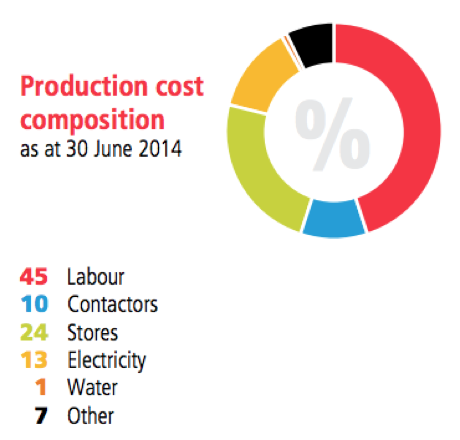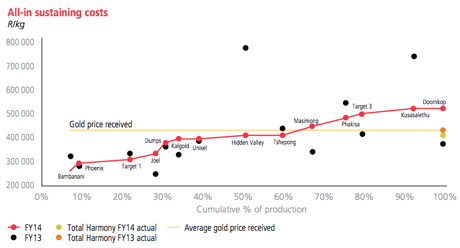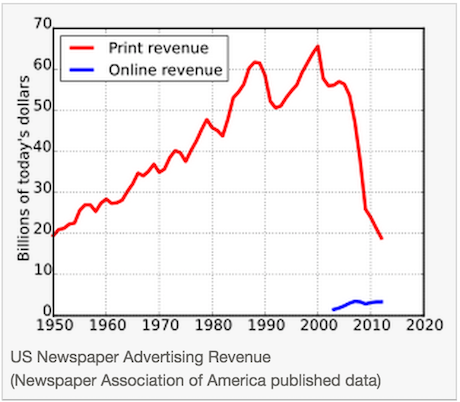"With Google soaring 16 percent plus on Friday to have a market capitalisation of 459 billion Dollars now, the NASDAQ boat was floated to the tune of 0.91 percent, the broader market S&P 500 was up 0.11 percent whilst the Dow Jones was off nearly one-fifth. It is not often that you see a day like that, when one really big company has such a marked impact. As we had pointed out on Friday however, this was a relief for all the (short) suffering Google shareholders, the stock has still underperformed the index over the last 12 months"
To market to market to buy a fat pig. The securities of Google do not appear in the Dow Jones Industrial Average, a 30 constituent price weighted index that is chosen by employees of McGraw Hill Financial. They decide what the American economy looks like and what the future is likely to look like, choosing the companies accordingly. So there is careful consideration with regards to what represents the American economy in an index of 30 shares. I guess they do a pretty good job, the rest of the market participants in stocks choose companies in the S&P 500, those companies importance and relevance on the index is based on their market capitalisation, i.e. what they are worth. If you want to find out currently which company has the biggest impact on the Dow Jones, then look here -> Sorted by % Weight in the Index. Goldman Sachs' share price is currently very important, as is IBM and 3M on the overall Dow Jones moves.
With Google soaring 16 percent plus on Friday to have a market capitalisation of 459 billion Dollars now, the NASDAQ boat was floated to the tune of 0.91 percent, the broader market S&P 500 was up 0.11 percent whilst the Dow Jones was off nearly one-fifth. It is not often that you see a day like that, when one really big company has such a marked impact. As we had pointed out on Friday however, this was a relief for all the (short) suffering Google shareholders, the stock has still underperformed the index over the last 12 months. True story. Year to date, it is one of the very best performing stocks out of the big caps.
I missed it, darn, the nerds of NASDAQ on Thursday passed their prior intraday high (5132.52 on the 10th of March 2000), settling at the close of 5210 on Friday evening. That took a decade and a half to get to!
2000. That was a while back, early 2000 saw those terrible floods in Mozambique, who will forget the pictures of the woman being airlifted, she gave birth to a child in a tree, I saw reference to the story on the web, who followed up a decade later: Baby born in tree now a 10-year-old girl. I am guessing that when she finishes school there will be more excitement, rightfully so. That just goes to show how long ago that is, if you had religiously continued to buy the NASDAQ index month after month, following the theory of Dollar cost averaging, you would have been able to buy the NASDAQ at 1139 points in October of 2002, over 2800 points in November 2007, back at 1380 points in March of 2009, it has been wild and rough, investing rather than chasing your tail (like a Jack Russell I told a I client this morning), you would have found yourself well rewarded.
Interesting fact about the Google price spike, it was the single biggest move higher in market cap for one company, ever.
For all the issues and problems of Greece and their citizens, their indebted nation and all the problems of Chinese stock investors, I do not know a single person who owns mainland listed Chinese stock, do you? And Greek stocks, do you know a person who owns those? I suspect that all the mainland European people that I know, indirectly they own European debt, Greek debt at that. What each and every Greek person advocating and pushing for debt relief must remember is that assets belong to someone else, that person will have to actually take the loss. Most of the money that Greece owes is to the European Financial Stability Facility (The EFSF), around 131 billion Euros, 53 billion to Eurozone governments, 27 billion to the ECB, with over 20 billion owed to the IMF. Other peoples money, right? And the terms given are pretty good, 2 percent bonds with maturities of as much as 30 to 40 years.
Anyhow, Greek citizens will see the banks open today, they will be able to withdraw the daily amount in one weekly amount, i.e. visit the ATM only once. Let us presume that people withdraw their amount each and every week for the whole year, 420 Euros times 52 weeks equals 21,840 Euros a year. Which at the current exchange rate of 13.46 = 294 thousand Rand. And this would be after you have serviced all of your bills, that monthly amount is 24 and a half thousand Rand. That is a rather big amount, wouldn't you say? How many South Africans would be in a position to stand in front of an ATM with capital controls and withdraw 24 thousand Rand a month? Very few. I think that the Greek government missed the best social experiment in eliminated money forever here, by encouraging everyone to use electronic methods of transferring money, thus creating a receipt on each and every transaction. No more cash, who cares, right? It may be the same pain as trying to eliminate the check in the US however. Too hard for ordinary people to wrap their heads around. M-Pesa is a necessity to those in rural East Africa who have no access to ATMs and they seem to thrive just fine, no queues for ATMs, as there are none.
Locally the market closed down one quarter of a percent, the resource stocks dragging the rest lower. Anglo American is now in the listed environment in Johannesburg worth less than Standard Bank and Sasol. Steinhoff and FirstRand are bigger. True story, the market cap of Anglo American is now 236 billion Rand, whilst seemingly the asset management community here seem to think that this is still the go-to investment. No sir. Old Mutual and Vodacom are breathing down the neck of Anglo American and if ever you needed a reminder of how the South African business landscape has changed, this was a city built on the gold mining industry, the first gold miner appears at 48th place on the market cap ranking tables. AngloGold Ashanti is roughly the same size as Truworths, smaller than Life Healthcare. And it is not just the gold companies, Amplats is now the same size as Brait, who would have thought?
The platinum price is below 1000 Dollars an ounce. 970 Dollars an ounce currently. Wow, that is completely awful. And what is more astonishing is that this is against the backdrop of European motor vehicle sales being at a five and a half year high. The gold price, all metal prices have been beaten up. The upshot of it all is that in the top 100 companies listed on the local exchange, there are 6 precious metal businesses. That is all. These are the pure gold and platinum companies, 6 apiece. I read the Harmony annual report last week after reading the news that Graham Briggs had resigned, skimmed it is a better word, that business sadly has a market cap of 6 billion Rand. The share price in New York, the ADR as quoted on Google finance goes back to October 1996, nearly 19 years worth of data shows that the stock in Dollar terms is down 86 percent since then. Simply astounding.
As per the Harmony annual report of 2014, 40 percent of costs are salaries and wages, and only 2 percent taxes and royalties. 12 percent is spent on electricity. Think about that for a second, nearly 55 percent of your costs before you have even budgeted for mine maintenance, exploration or paying a single supplier. It is more than that, I found this little pie chart on page 49 of the annual report from last year:

And to think that with the current round of wage negotiations a way away from being completed, it seems like the most costly item, labour, could increase substantially. And the current mining environment, with the much lower gold prices (at a five year low) is hardly great for the company. And their 34 thousand employees and contractors. One third of Harmony shareholders are US based, (as at June last year), 13 percent the UK and 42 percent here. As at the end of June 2014, African Rainbow Minerals owned 14.62 percent, the PIC 6.75 percent and Allan Gray 11.11 percent. Big and respected names in there. As per the Harmony annual report, another image, the all in costs from last year are as follows:

The current Gold, Rand per kg is 444,195 thousand Rand. So that yellow line is basically unchanged, if labour costs (the biggest) increase, that has a market impact here. There is a reason why we do not own these companies, I wish them all the best, it is hard at these current prices to not see something crack, and in a bad way currently. Mine shaft closures and job losses are inevitable, if the hard decisions are not taken now then it is a possibility that all "stakeholders" could end up losing here. Sigh.
Linkfest, lap it up
Where do you fit on the global income spectrum? This interesting piece will tell you and put things into perspective - Are you in the global middle class? Find out with our income calculator
The title of this article will already get people's emotions going. Either you think CEO's are paid what they deserve or you think CEO's get paid too much because of their ability to get tonnes of share options - Is a CEO really worth R28 million per year?. I think that the market is the most efficient way of allocating resources, so if demand and supply have determined the salary of a CEO, who am I to say the market has got it wrong? Rather the market allocating resources as opposed to government policies. I also think that investors need to pay closer attention to the remuneration policies of top management.
This trend seems set to continue, which will create opportunities in the advertising arena - Mid-year report: The newspaper industry's billion dollar challenge

Home again, home again, jiggety-jog. Oh no, the single commodity stocks, specifically the gold and platinum (precious metals stocks) are taking an absolute whipping. Platinum stocks down 4.5 percent and as a collective at the get go (the index) is at its lowest levels in over a decade. Better off than the gold stocks as a collective, in Rand terms down 45 percent over the last decade. The outlook is clouded, avoid. The rest of the market is OK, stocks as a collective up one third of a percent.
Sent to you by the Vestacters, Sasha, Michael, Byron and Paul.
Follow Sasha, Byron and Michael on Twitter
087 985 0939
No comments:
Post a Comment